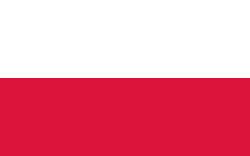ERP (Enterprise Resource Planning) is an IT system that helps manage an entire company from a single platform. It enables handling areas such as sales, inventory, accounting, production, and HR all in one place. ERP supports automation and real-time data exchange between departments.
Main Functions of ERP Systems
Which business areas can be managed in one system without switching between tools?
- Order and sales management
- Inventory and logistics
- Production planning and costing
- Finance and accounting
- Project and schedule management
- Reporting and analytics
Use Case Examples
- Manufacturing: job planning, stock control, operational cost tracking
- E-commerce: invoice automation, WMS integration, data sync between store and warehouse
- HR & Finance: time tracking, payroll, automated bookkeeping
- Project management: budget control, task assignments, progress tracking
ERP in Practice
Popular ERP solutions include Odoo, SAP, and Microsoft Dynamics.
More and more companies use ERP in a SaaS model, where the system runs in the cloud and is accessible via browser. ERP implementation often involves system integration—connecting tools like CRM, e-commerce platforms, and production management software.
What Does an ERP Implementation Look Like?
ERP implementation varies by company but typically includes:
- Pre-implementation analysis – assessing the required functionalities
- System configuration – customizing modules to match company needs
- Data migration – from existing tools like Excel or legacy accounting software
- Testing – ensuring the setup works as expected
- Employee training
The entire process can take from a few weeks (for simple cases) to several months (for complex businesses with large teams).
Want to learn more about ERP?
Have questions? Contact us!
At Solvti, we know ERP like few others and we’re happy to answer your questions or offer tailored advice.
FAQ
ERP systems are flexible and used by businesses of all sizes—from small companies managing basic areas like sales or inventory to medium and large enterprises handling complex, multi-departmental processes. ERP is widely used in industries such as manufacturing, retail, services, logistics, and even education.
Thanks to its modular structure, each company can choose only the features it needs—from invoicing and project management to production control.
No, they’re different systems that often complement each other.
- ERP (Enterprise Resource Planning) manages the company’s operations, finances, production, and resources.
-
CRM (Customer Relationship Management) focuses on customer interactions—sales tracking, inquiries, sales funnels, and relationship management.
Many companies integrate ERP and CRM so that sales and customer data are accessible in one place.
Yes—many ERP systems now run in the SaaS model, accessible via a browser without local installation.
Cloud-based ERP offers:
- Fast access from anywhere
- No investment in infrastructure
- Automatic updates and backups
-
Easy scalability
This makes ERP available from any location, even on a phone or laptop while traveling.
Absolutely. ERP often integrates with tools already used in the company, such as:
- E-commerce platforms (e.g., PrestaShop, Magento, WooCommerce)
- WMS for warehouse management
- CRM systems
- Financial and accounting tools
-
Document workflow systems
Integration allows automatic data exchange between systems, eliminating manual input and reducing error risk.
ERP implementation varies by company but typically includes:
- Pre-implementation analysis – Identifying which features the business needs.
- System configuration – Adjusting modules to match company specifics.
- Data migration – Importing data from Excel or legacy systems.
- Testing – Ensuring everything works as expected.
-
Employee training – Teaching staff how to use the new system.
The entire process may take from a few weeks (for simpler setups) to several months (for complex environments).

